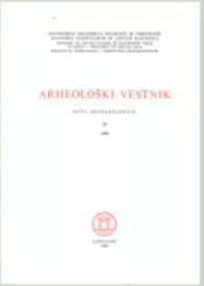Some Important Problems of Man’s Evolution
Abstract
New light has been thrown on the problem of Eoanthropus by O a k l e y ’s fluorine test. Eoanthropus seems to have been con[1]temporary with the Neandertalians (non-Sapiens) and the Sapiens forms of the Riss-Wiirm interglacial. 2. I agree with the authors who do not consider the “giants ’ (Weidenreich) as real and direct ancestors of the Hominidae. Giant forms — normally — are specialized “end-forms”, and they are sure not to be ancestors of more “plastic” or “paedomorphic” oines. But in any case, at the end of Pliocene and the beginning of Pleistocene there lived some big Primates, even though not giants as claimd by We i d e n r e i c h (cf. A s h t o n and Z u c k e r m a n !). 5. Now it seems quite sure that the Australopithecinae were a type walking upright and having only a small brain capacity. An australopithecinelike form may have taken a central position in our family tree, despite of the fact that the actually discovered Austra[1]lopithecinae are probably too young for this position. It is empha[1]sized that — in comparison with the Pongidae on the one side, and the Pithecanthropi (including the Neandertalians) on the other — the Australopithecinae had apparently only low and relatively undeveloped brow ridges. There are, of course, some more important generalized characters which enable us to consider the Australo[1]pithecinae as possible ancestors in our family tree. In my opinion, it is beyond doubt that the real forerunner of ours is to be found among forms near to the Hominoidea and not among the lower monkeys or even Tarsioids and Lemuroids. Despite of the fact that — considering the last million years or so — e. g. the Chimpanzee may have had 100 000 generations and Homo some 50 000 only; de[1]spite of the fact that just this makes Man about half as young as the Chimpanzee; that this relative youth of Man. his “fetalization , his “paedomorphism”, and the relative “plasticity” are of greatest impor[1]tance to protect such a being during all the troubles of the Pleisto[1]cene; despite of all this, there remains the fact of the blood relation documented by the serological reaction and by the bloodi groups. This blood relations tells about a common ancestor of all Hominoidea. I fully agree with Va 11 o i s who asks Straus, if (considering the blood factors, serological re[1]action, menstruation etc.) these physiological characters ought to be convergences too.3" Considering all this, de Beer s paedomor- 35 35 Vallois, H. V.: Straus Jr. (W. L.), The riddle of man’s ancestry. The Quart. Rev. of Biol. voi. 24, 1949, pp. 200—223. — Ref. L’Anthropologie 54, pp. 495/6, Paris 1950.phosis theory is quite acceptable, though we may not agree with his view that the Neande italiana were the direct ancestors of Homo sapiens. In any case, our remote ancestry is still considerably que[1]stionable, even if not so much as estimated by Straus (cf. 24!). We may imagine that we have to search for our ancestors in the Pliocene among the higher developed but not gerontomorphic apes. 4. I cannot agree with some polycentric theories' about our remote ancestors. Despite of all respect to the late Dr. Weiden[1]reich, I cannot imagine that the modem Chinese have developed from Sinanthropus, the Australians from Pithecanthropus etc. The evolution of Man is not such a simple event as to have taken place in different parts of the Earth and at different times from various ancestors. I cannot imagine that all the similarities of the living “races” have been acquired by convergences from various Primate ancestors. In this respect I fully agree with Roginski. The living mankind is of a single remote ancestry, and Sinanthropus, Pithecan[1]thropus, the Neadertalians etc. are far too specialized and geronto[1]morphic types to develop into the much more paedomorphic types of ours and especially into Chinese. 5. The Soviet anthropology seems to be hitherto quite out of contact with the great events in human evolution in the world. The Soviet anthropologists still hold the view that the Neander[1]talians must be our direct ancestors, and put the Mousterian (e. g. of Teshik-Tash and Aman-Kutan) into the Second Interglacial. If the facts don’t agree with the “theory” once accepted — the worse for the facts ... The anthropologists are facing some important problems of human evolution. The one thing seems sure today, namely that the a n t h r o p o l o g i c a l t y p o l o g y is of a v e r y l ow v a l u e for dating our remote ancestry, quite contrary to P i t ti o n i’ s opinion expressed in Mitt. d. Wr. Anthrop. Ges. LXXX, 1—2, 1950
Downloads
Downloads
Published
How to Cite
Issue
Section
License

This work is licensed under a Creative Commons Attribution-NonCommercial-ShareAlike 4.0 International License.
Authors guarantee that the work is their own original creation and does not infringe any statutory or common-law copyright or any proprietary right of any third party. In case of claims by third parties, authors commit their self to defend the interests of the publisher, and shall cover any potential costs.
More in: Submission chapter





